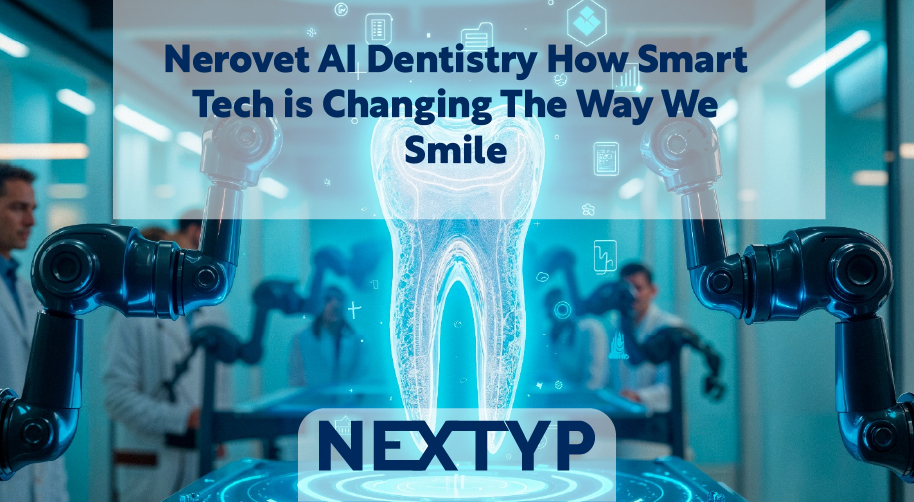Let’s be real, most people don’t think about dentist visits until something hurts bad enough to ruin your day. But behind the scenes, dentistry’s quietly going through a big shift. It’s called nerovet ai dentistry, and it’s not just another fancy buzz word. It’s a real tech that’s starting to change how dentist’s find, plan and even talk about oral health with there patients.
If you’re wondering what that even means or why it matters, hang tight. We’ll go through what nerovet ai dentistry actually is, why it’s blowing up lately, and what it could mean for both dentists and patients like yourself.
What is Nerovet AI Dentistry Anyway
Nerovet ai dentistry is basically a new way of doing dental care that uses artificial inteligence (AI) to help dentists look at images, detect problems early, and decide what treatments might work best. Think of it like having a really smart assistant that never gets tired and can scan through hundreds of X-rays in seconds.
It’s not here to replace dentists, it’s here to help them out. The AI’s trained with thousands (sometimes millions) of dental images, learning how to notice tiny patterns in tooth structure, gum issues, or jaw alignment that humans might overlook.
According to the National Center for Biotechnology Information (NCBI), AI systems in dentistry are already being used to spot cavities, bone loss, and other oral problems with more accuracy than traditional methods. That means less guess work and earlier fixes, which honestly saves both money and teeth.
How It Works (Without Too Much Tech Talk)
- Data input: The AI gets X-rays, 3D scans, and sometimes patient history.
- Pattern finding: It checks for early signs of cavities, gum disease, and other stuff.
- Reporting: In seconds, it gives back a result showing what areas might need attention.
- Learning more: Every time it’s used, it learns a bit more, which makes it smarter over time.
It’s kinda like having another dentist looking over your shoulder, except this one doesn’t take lunch breaks or forget where the file went.
Why It Actually Matters
Traditional dentistry relies heavy on human interpretation. And while dentists are great, people get tired, distracted, or just see things differently from one another. AI helps bring more consistancy.
Imagine finding a small crack before it turns into a painful root canal. Or seeing gum issues in there very early stages when it’s still easy to treat. That’s the kind of edge nerovet ai dentistry gives.
For patients, it means less waiting, less invasive work, and fewer surprises. For clinics, it means less paperwork, faster diagnosis and happier clients overall.
Real-World Uses of Nerovet AI Dentistry
Early Diagnosis
AI can scan dental X-rays and instantly highlight areas that look suspicious. The dentist still reviews it, but it saves time and helps catch stuff that might’ve been missed before.
Orthodontic and Implant Planning
AI tools help map out tooth movements and bone density for implants. It can predict how things will shift, giving more precise results with less trial and error.
Patient Communication
Some systems even let patients see what’s going on in color overlays or digital models. It makes explaining treatment plans a whole lot easier, and honestly, people tend to trust what they can see.
Pros and Cons (Because Nothing’s Perfect)
Pros
- Catches dental problems earlier, sometimes years ahead
- Improves accuracy and reduces guess work
- Makes it easier to explain conditions to patients
- Speeds up workflow inside clinics
- Saves cost long-term because less major repair work
Cons
- The tech can be pricy to setup at first
- Staff need training to use it right
- There’s risk if dentists depend too much on what AI says
- Data privacy laws can be tricky with cloud systems
Even smart AI can be wrong sometimes if it’s trained on bad data, so there always needs to be human supervision.
Nerovet AI vs Traditional Dentistry
| Feature | Traditional | Nerovet AI Dentistry |
|---|---|---|
| Diagnosis speed | Slower, manual | Fast, automatic |
| Accuracy | Depends on dentist experience | Consistent, data-based |
| Workflow | Paper files | Digital, streamlined |
| Visual tools | Static X-rays | Interactive overlays |
| Error margin | Human variation | Lower, reviewed |
AI doesn’t replace dentists. It just gives them better tools to make decisions faster and more confidently.
Why It’s Growing So Fast
- Dental clinics are becoming digital anyway, so AI fits right in.
- More focus on prevention rather than waiting for damage.
- Cloud computing makes AI software affordable even for small clinics.
- Patients like high-tech treatment because it feels modern and precise.
Basically, it’s the same shift that happened in medicine, just finally catching up in oral care.
Tips for Patients and Dentists
For Patients
- Ask your dentist if they use AI when reading your scans.
- Don’t assume it’s all robots — humans still make the final call.
- If AI finds something, ask to see it on screen, it’s actually kinda cool.
For Dentists
- Try it on a few cases first before going all in.
- Make sure everyone on staff knows how to explain AI results clearly.
- Always double-check AI’s findings. It’s a tool, not a decision maker.
- Tell patients about it — people love when clinics use new tech.
Common Myths People Believe
Myth : AI will replace dentists.
Nope. It’s a helper, not a boss.
Myth : It’s too expensive.
Costs are coming down fast, plus it saves time and errors in the long run.
Myth : It’s not reliable.
AI trained with good data can be more consistent than humans sometimes.
Myth : It can run on it’s own.
Nah — it still needs a trained dentist to read and approve results.
Final Thoughts The Future Looks Bright (and Clean)
At the end of the day, nerovet ai dentistry isn’t just hype. It’s a smarter, faster, more data-driven version of dental care. If you’re a patient, it means earlier detection and clearer answers. If you’re a dentist, it’s a way to make your job easier and your results better.
Sure, AI’s not perfect — nothing is. But used right, it’s one of the best tools modern dentistry has ever had. The future of oral health is already here, and honestly, it’s looking like a pretty good reason to smile.



